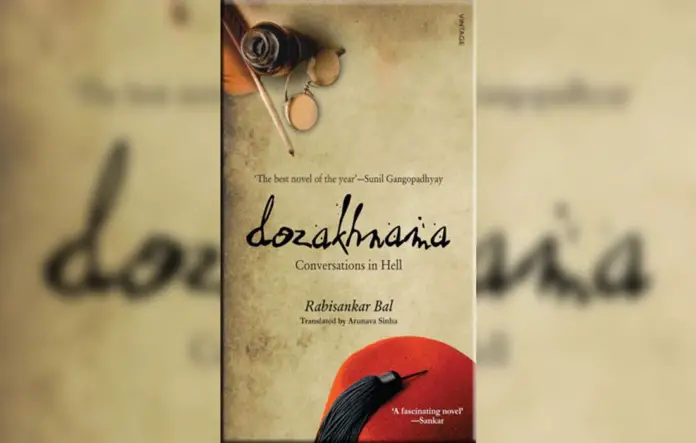‘Dozakhnama’ or ‘Conversations in Hell’, written by Rabisankar Bal, published by Liberty Books, and printed by Ferozsons Private Limited, falls in the genre of biography entwined with fiction. The plot is convoluted. It revolves around two major poets of Lucknow, Mirza Ghalib, and Saadat Hassan Manto.
Manto has written a manuscript on the life of Ghalib that is yet unpublished.
He is here to carry out research on life in Heera Mandi.
He talks of how the kotha was once a respectable place where the tawaif and courtesans like Umrao Jaan Ada were highly respectable. They were truly cultured women of Lucknow. From culinary skills to a melodious singing voice to dance and ghazal competitions, these women were not just flesh and blood but endowed with an intellect and wisdom that cannot be paralleled to the prostitutes of today.
Carnal pleasure is all that is left of these young girls who have been abducted and forced into this trade. Heera Mandi is no longer a place visited by nawabs and poets. It is now just filth and dirt.
Ghalib talks of how he is always in a drunken stupor. He falls in love with many women but Kanta was a special one. He could talk to her. She was real and natural. Not just a made-up doll, but true beauty.
Ghalib narrates stories from his life to Manto.
He unfolds the story of love between a young boy Yousaf and a girl Bilquis. Yousaf drowns himself when he can’t get Bilquis. Khanum Bilquis’s maid cannot see her mistress distraught so she comes up with a plan to unite her with Yousaf. How that happens is something you have to find out.
There is Ishq-e-haqiqi and ishq-e-majazi? What do the two mean?
Is Yousaf’s tale an example of Ishq-e-Haqiqi?
The novel points to an important truth. Youth is only temporary as Shakespeare said:
“What’s in a name that which we call a rose by any other name would smell as sweet.” (Romeo and Juliet)
The lines are a correct portrayal of how what is on the surface may not always be the truth. Youth maybe beautiful but it is fleeting. What matters is the beauty of the soul.
And only the beauty of the Creator is indestructible!
In the subplot, Begu, a mountain woman who lives in a Sarai becomes an object of attraction for Mirza. She resists the temptation but then gives in as she offers him a lozenge (a shape like a rhombus or diamond).
She lives in Bataut. An extraordinary island in the mountains along the Jammu Srinagar highway. The writer captures the lush green trees and snow-capped mountains with remarkable finesse. The reader feels a surge of relief wash over, refreshed and relaxed.
In the main plot, Ismat and Mirza are in a relationship. Ismat is jealous of Begu as she taunts Mirza for his ‘third-class love affair’. Mirza understands Ismat’s hidden love between the lines and gives her the satisfaction that it was nothing more than a fling.
The novel is an insight into love, betrayal, cultures, and the history of the subcontinent.
How poets were often imprisoned for spreading profanity. Hence, the name Dozakhnama!
A biographical account from the eyes of Saddat Hassan Manto of the life of Mirza Ghalib, the novel is difficult to understand as it has several characters.
But hats off to the author for coming up with a brilliant piece of writing. It reflects how widely read the author is!







